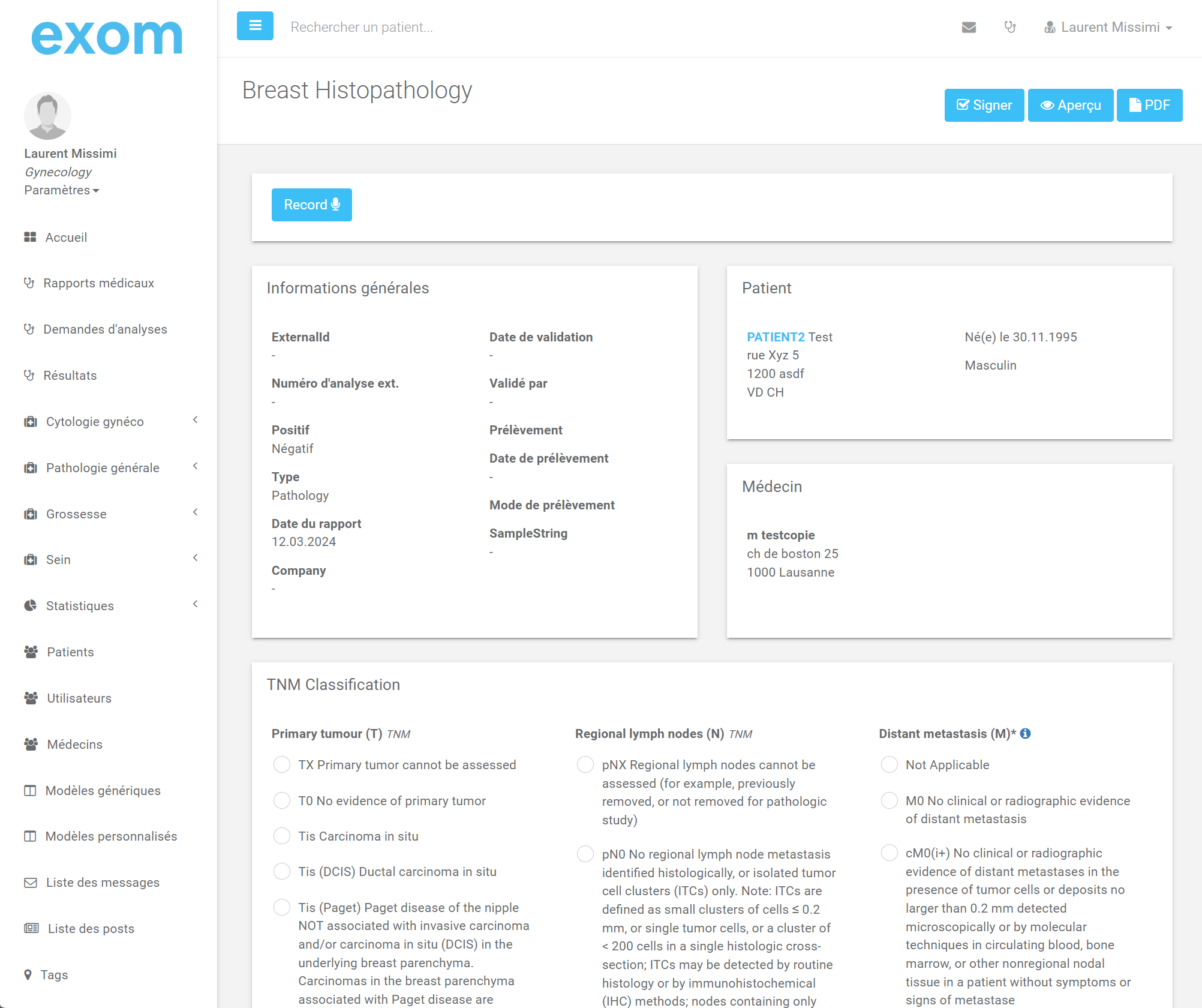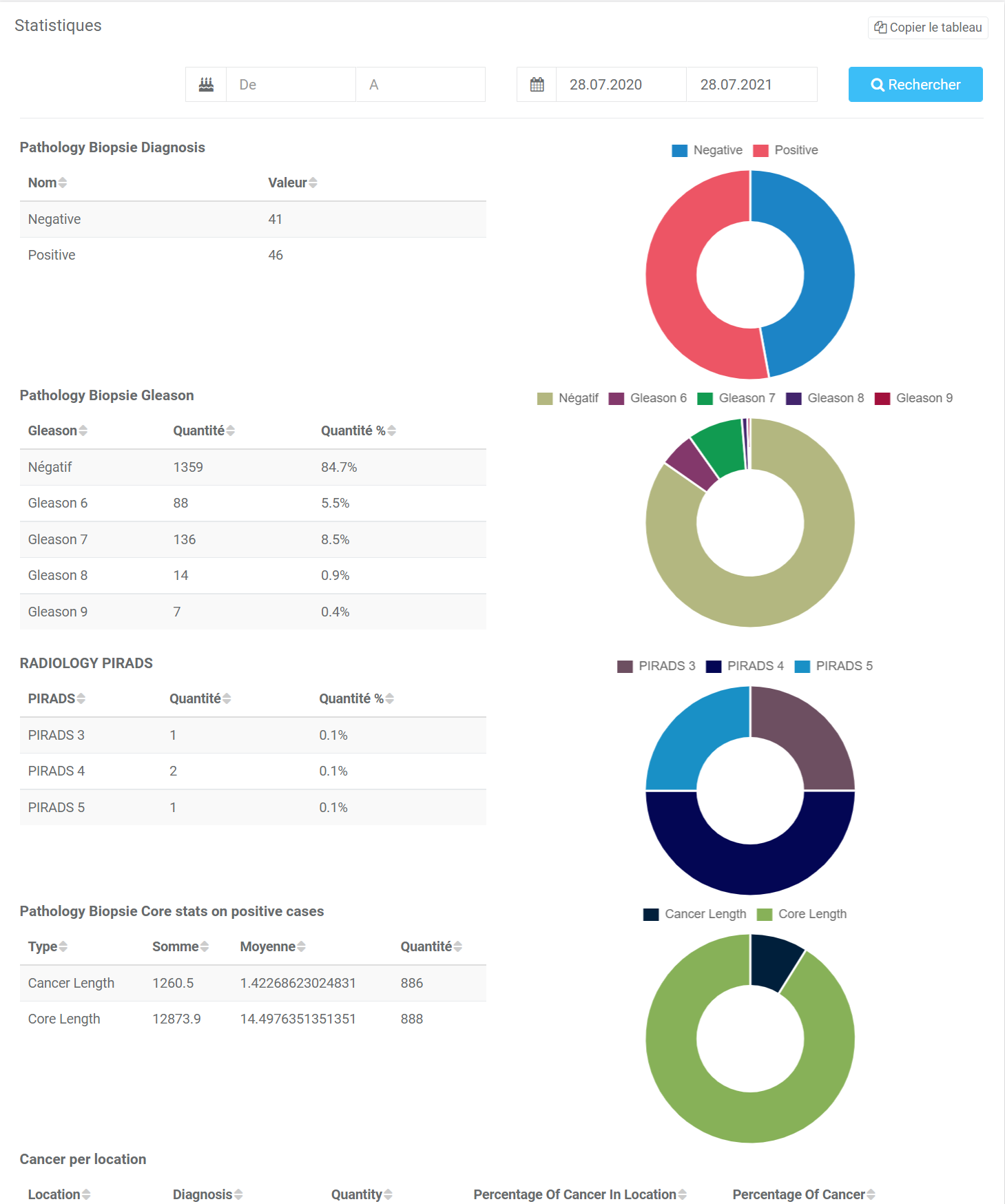We enable patients and medical entities to embrace data-driven medicine by integrating multimodal data, offering a comprehensive approach to healthcare. This approach enables an integrative diagnostic method while ensuring data security for patients.
The standardization of result data proposed by exom simplifies statistical and epidemiological processes, making artificial intelligence development more accessible, less costly, and more environmentally friendly. This approach not only streamlines data analysis but also contributes to a more efficient and sustainable integration of AI into medical practices.

The exom solution opens new avenues for research through real-time epidemiology. It streamlines the management of analyses by focusing on the most relevant locations and types of tests. Rather than relying on traditional practices, exom helps to prioritize analyses that yield the most valuable data. This approach enhances the precision of diagnostics and the quality of treatments, ensuring that decisions are based on the most informative and impactful insights, contributing to more efficient, data-driven healthcare and research.


Real-time statistics and epidemiology functionality in exom offers specialty centers, clinics, and doctor groups a powerful tool for data-driven decision-making. By continuously analyzing patient data, it helps validate the default analysis choices, ensuring they are aligned with current trends and medical standards. This functionality also provides strong evidence to support the efficiency of diagnostic investigations, optimizing resource allocation and improving patient outcomes. Additionally, it allows for rapid adjustments to clinical approaches based on evolving data, leading to more accurate and timely diagnoses.

With exom, real-time searches can be conducted across all fields present in biopsy reports. Users, including individual doctors, clinics, or groups such as prostate centers, can easily search and filter data. This feature is particularly useful for comparing treatments for specific pathologies or for building medical validation data. By allowing users to quickly access and analyze biopsy information, this functionality supports more informed clinical decisions and enhances collaboration among healthcare professionals, leading to improved patient care and outcomes.

Diagnostic cases can be sorted by nearly one hundred criteria, such as cancer type, biopsy size, or patient age, with ease and without requiring any coding effort or additional costs. This streamlined process simplifies diagnostic creation, allowing for efficient and detailed case analysis without the need of external forces.